Photos: Baby Sand Tiger Sharks
Scientists have discovered a shark nursery off New York where baby sand tiger sharks, ranging in age from several months to 5 years, migrate in order to eat and grow. The nursery, in Great South Bay, also offers the little ones protection from predators. Here’s a look at the nursery, the baby sharks and the marine scientists at work. [Read full story on the shark nursery discovery]
A place to grow

Researchers from the Wildlife Conservation Society's New York Aquarium discovered the sand tiger shark nursery in Great South Bay, an estuary on Long Island's south shore. Despite its toothy grin, this species (Carcharias taurus) is not considered aggressive toward humans, unless provoked. (Credit: Julie Larsen Maher ©WCS)
Subjects to test
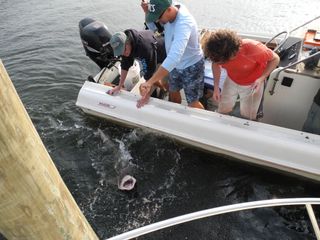
In 2015, NY Seascape scientists captured and released 15 juvenile sharks, tagged with acoustic trackers. Here, scientists attempt to capture a juvenile sand tiger shark, which Jon Dohlin says is a much easier task than capturing the adults. (Credit: John Delaney/WCS)
The life of sharks

The little sharks were tagged with acoustic transmitters; here, a WCS veterinarian inserts the tag into the body cavity of a juvenile sand tiger shark. Using an array of acoustic receivers placed in Great South Bay, the aquarium scientists were then able to track the sharks. (Credit: John Delaney/WCS)
Sign up for the Live Science daily newsletter now
Get the world’s most fascinating discoveries delivered straight to your inbox.
Testing their animals
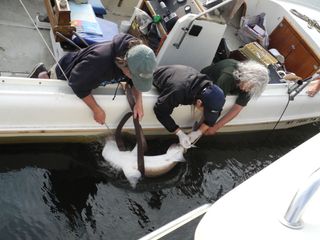
The scientists were also interested in the health of the sharks, and here they are taking a blood sample from a captured juvenile sand tiger shark before releasing it back into Great South Bay. Currently, there is no evidence that the nursery sharks have any health issues, Jon Dohlin, vice president and director of the aquarium, told Live Science. (Credit: John Delaney/WCS)
Tracking their animals
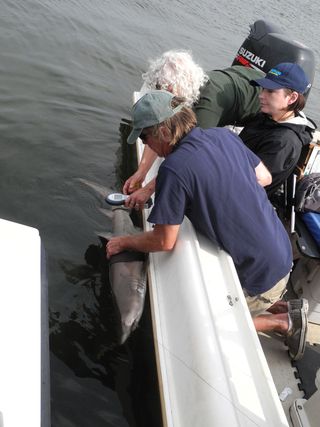
A team of NY Aquarium scientists uses a Passive Integrated Transponder tag reader to get the code from an electronic tag under the shark's skin. The researchers placed these uniquely coded tags under the skin on the dorsal side of each shark caught and released. (Credit: John Delaney/WCS)
A summer stay
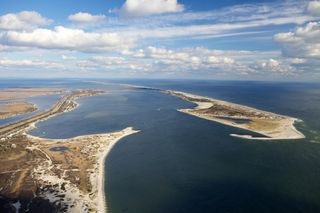
Right after birth, baby sand tiger sharks migrate north along the East Coast. They enter Great South Bay — where they spend the summer — through Fire Island Inlet (shown here). They also depart through that inlet in early fall.
"These animals are born south of here, probably in the Chesapeake, Delaware and Carolinas areas, they are delivered live from their mothers, at about 9 to 12 inches long, when they arrive up the coast in the New York nursery," Dohlin said. Their ages range from a few months old to 4 or 5 years old, all considered juveniles. (Credit: ©Keith Ellenbogen with aerial support from Lighthawk)
Home for a while
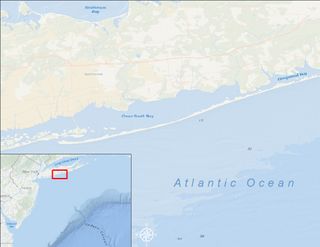
In order to protect these juvenile sand tiger sharks, Dohlin said the team is not releasing specific information on the location of the nursery, other than placing it in Great South Bay. (Credit: Courtesy of WCS)
Follow us @livescience, Facebook & Google+.

Jeanna served as editor-in-chief of Live Science. Previously, she was an assistant editor at Scholastic's Science World magazine. Jeanna has an English degree from Salisbury University, a master's degree in biogeochemistry and environmental sciences from the University of Maryland, and a graduate science journalism degree from New York University. She has worked as a biologist in Florida, where she monitored wetlands and did field surveys for endangered species. She also received an ocean sciences journalism fellowship from Woods Hole Oceanographic Institution.
